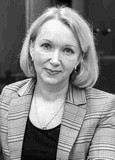Structure of adaptive physical education classes for children with cerebral palsy based on heart rate indicators
Keywords:
physiological curve, structure of classes, heart rate, cerebral palsy, adaptive physical culture.Abstract
Objective of the study was to determine the structure of classes for children with cerebral palsy based on the analysis of heart rate indicators.
Methods and structure of the study. Scientific work was carried out at the Center for Adaptive Physical Culture of Petrozavodsk State University for 12 months. The experimental group consisted of 13 people aged 12-22 years with a diagnosis of cerebral palsy. Throughout the study, during adaptive physical education classes, heart rate indicators were recorded using a chest heart rate monitor with each change in the direction of physical exercises, as well as their order.
Results and conclusions. Analysis of the results showed that a uniform heart rate response to a change in the direction of exercise was not observed, but two variants of the structure of the exercise were identified, in which the physiological curve of the study participants lined up as close as possible to the reference values. In the first option (according to 60% of participants), exercises alternate in the following sequence: strength exercises (heart rate from 80 to 95 beats/min), cyclic exercises (heart rate 120 beats/min), statokinetic stability exercises (heart rate 131), joint gymnastics (heart rate 75 beats/min). In the second option (according to 40% of participants), the exercises alternate as follows: joint gymnastics (heart rate 65 beats/min), statokinetic stability exercises (heart rate 124 beats/min), aerobic exercises (heart rate 131 beats/min), strength exercises (heart rate 74 beats/min).
The results of the study are recommended to be used when planning the structure of classes for children with cerebral palsy.
References
Gross N.A., Sharova T.L., Klendar V.A., Molokanov A.V. Kontrol sostoyaniya organizma detey-invalidov s dvigatelnymi narusheniyami pri ispolzovanii aktivnykh fizicheskikh uprazhneniy v reabilitatsii. Vestnik sportivnoy nauki. 2023. No. 2. pp. 55-62.
Kielevyainen L.M. Obespecheniye aerobnogo rezhima raboty na zanyatiyakh adaptivnoy fizicheskoy kulturoy dlya lyudey s detskim tserebralnym paralichom. Teoriya i praktika fizicheskoy kultury. 2023. No. 1. pp. 56-58.
Klendar V.A., Gross N.A., Korzhenevsky A.N. Analiz vliyaniya fizicheskikh nagruzok na funktsionalnoye sostoyaniye detey-invalidov s DTSP razlichnykh vozrastnykh grupp v zavisimosti ot urovnya bolshikh motornykh funktsiy (GMFCS) pri provedenii zanyatiy po fizicheskoy reabilitatsii. Vestnik sportivnoy nauki. 2022. No. 6. pp. 40-48.
Pelevin Yu.V., Nikolaenko V.I., Kudryashova O.V., Afanasyeva E.V., Lebedeva M.A., Badil V.A., Khomich M.M., Noskin L.A. Dinamicheskaya otsenka funktsionalnogo sostoyaniya kardiorespiratornoy sistemy u detey s detskim tserebralnym paralichom. Pediatriya. Zhurnal im. G.N. Speranskogo. 2011. Vol. 90. No. 5. pp. 82-87.


